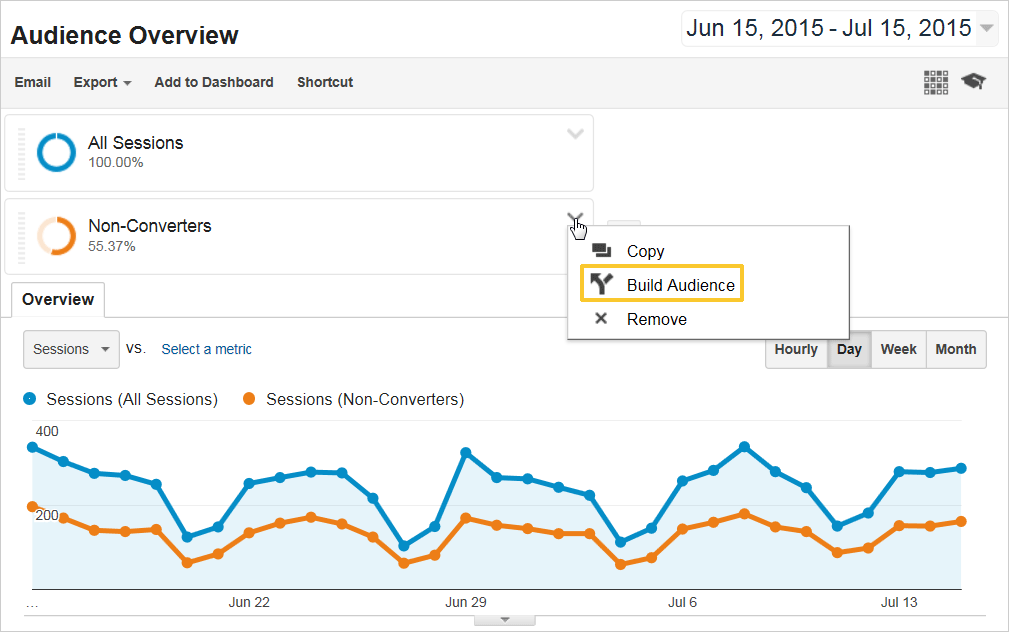Harnessing Remarketing in Google Analytics: A Comprehensive Overview
Using remarketing in Google Analytics offers organizations a tactical side in reaching out to potential clients. This guide will certainly drop light on the necessary actions entailed in taking advantage of the complete capacity of remarketing in Google Analytics, leading to enhanced advertising and marketing results.
Recognizing Remarketing in Google Analytics
Remarketing in Google Analytics allows services to strategically target individuals that have formerly engaged with their site or mobile application. By leveraging data from Google Analytics, businesses can develop personalized remarketing listings based upon individual actions, such as web pages checked out, activities taken, or particular objectives attained. This effective device enables services to re-engage with customers who have revealed passion in their services or products, inevitably enhancing the chance of conversion.
Recognizing the various kinds of remarketing techniques is essential for a successful project - What Is “Remarketing” In Google Analytics?. Google Analytics uses numerous options, consisting of basic remarketing, vibrant remarketing, and remarketing listings for search ads (RLSA) Each type serves a special function and can be customized to fulfill particular advertising and marketing purposes
Additionally, analyzing the efficiency of remarketing projects is crucial for maximizing results. Google Analytics supplies valuable insights into the efficiency of various remarketing strategies, allowing businesses to make data-driven decisions and fine-tune their targeting method. By continuously keeping an eye on and changing remarketing initiatives based on analytics data, services can make the most of ROI and drive success in their advertising campaigns.
Establishing Remarketing Projects

After establishing up target market lists, the following action is to connect Google Analytics with Google Ads. By connecting these two platforms, organizations can flawlessly move target market lists from Google Analytics to Google Advertisements for remarketing purposes. This combination enables more accurate targeting and much better project efficiency.
As soon as the accounts are connected, organizations can create remarketing projects in Google Advertisements utilizing the audience provides previously specified in Google Analytics. These campaigns can be personalized with details advertisement creatives, messaging, and bidding approaches to efficiently re-engage with previous site visitors and drive conversions. By following these steps, services can take advantage of the power of remarketing to improve their marketing initiatives and advice boost ROI.
Using Target Market Division Approaches

Predefined sectors in Google Analytics enable you to swiftly evaluate usual audience classifications like new users, returning individuals, or users who completed a specific objective on your site. Custom segments, on the other hand, enable you to produce distinct sectors based upon details criteria that are essential to your organization purposes. Dynamic remarketing lists immediately change based upon individual habits, revealing tailored ads to individuals that have actually connected with your site particularly ways.
Studying Remarketing Efficiency Metrics
Upon examining the efficiency of remarketing campaigns in Google Analytics, the analysis of vital performance metrics offers useful insights into target market interaction and conversion prices. By diving right into metrics such as click-through rates (CTR), conversion rates, price per purchase (CPA), and return on advertisement spend (ROAS), marketing professionals can assess the success of their remarketing efforts. Analyzing these metrics allows marketing professionals to maximize projects, refine target market targeting, and allot budget plans effectively to boost overall next remarketing performance.
Maximizing Remarketing Strategies
When refining remarketing approaches in Google Analytics, concentrating on audience division is paramount for achieving project success. By dividing your audience right into particular sectors based on their behavior, demographics, or passions, you can tailor your advertisements better to each team. This targeted strategy raises the chance of engaging users that have actually currently revealed passion in your services or items, bring about higher conversion prices.
An additional vital Go Here aspect of maximizing remarketing methods is continuously testing and refining your projects (What Is “Remarketing” In Google Analytics?). A/B testing different advertisement creatives, messaging, or deals can assist you recognize what resonates best with your audience and drives the most conversions. By examining the performance of these examinations in Google Analytics, you can make data-driven choices to maximize your remarketing efforts better
Furthermore, leveraging dynamic remarketing can significantly improve your campaign results. This function permits you to reveal individualized advertisements to individuals based upon their previous communications with your website, showcasing service or products they have actually previously checked out. By supplying tailored web content to customers based upon their behaviors and interests, vibrant remarketing can assist enhance interaction and drive conversions.
Verdict
To conclude, utilizing remarketing in Google Analytics is a tactical technique to target customers who have formerly engaged with a web site. By developing tailored target market checklists and using audience division techniques, companies can enhance remarketing campaigns for boosted conversion prices. Examining performance metrics and continually maximizing methods are important for making the most of the performance of remarketing initiatives.
Google Analytics uses numerous alternatives, consisting of typical remarketing, dynamic remarketing, and remarketing lists for search advertisements (RLSA)After setting up target market lists, the following action is to link Google Analytics with Google Ads. By connecting these 2 platforms, companies can perfectly transfer target market lists from Google Analytics to Google Advertisements for remarketing purposes.Once the accounts are linked, services can create remarketing projects in Google Ads utilizing the audience notes previously defined in Google Analytics.When refining remarketing methods in Google Analytics, concentrating on audience division is extremely important for attaining project success.
Comments on “Understanding the Power of Remarketing In Google Analytics”